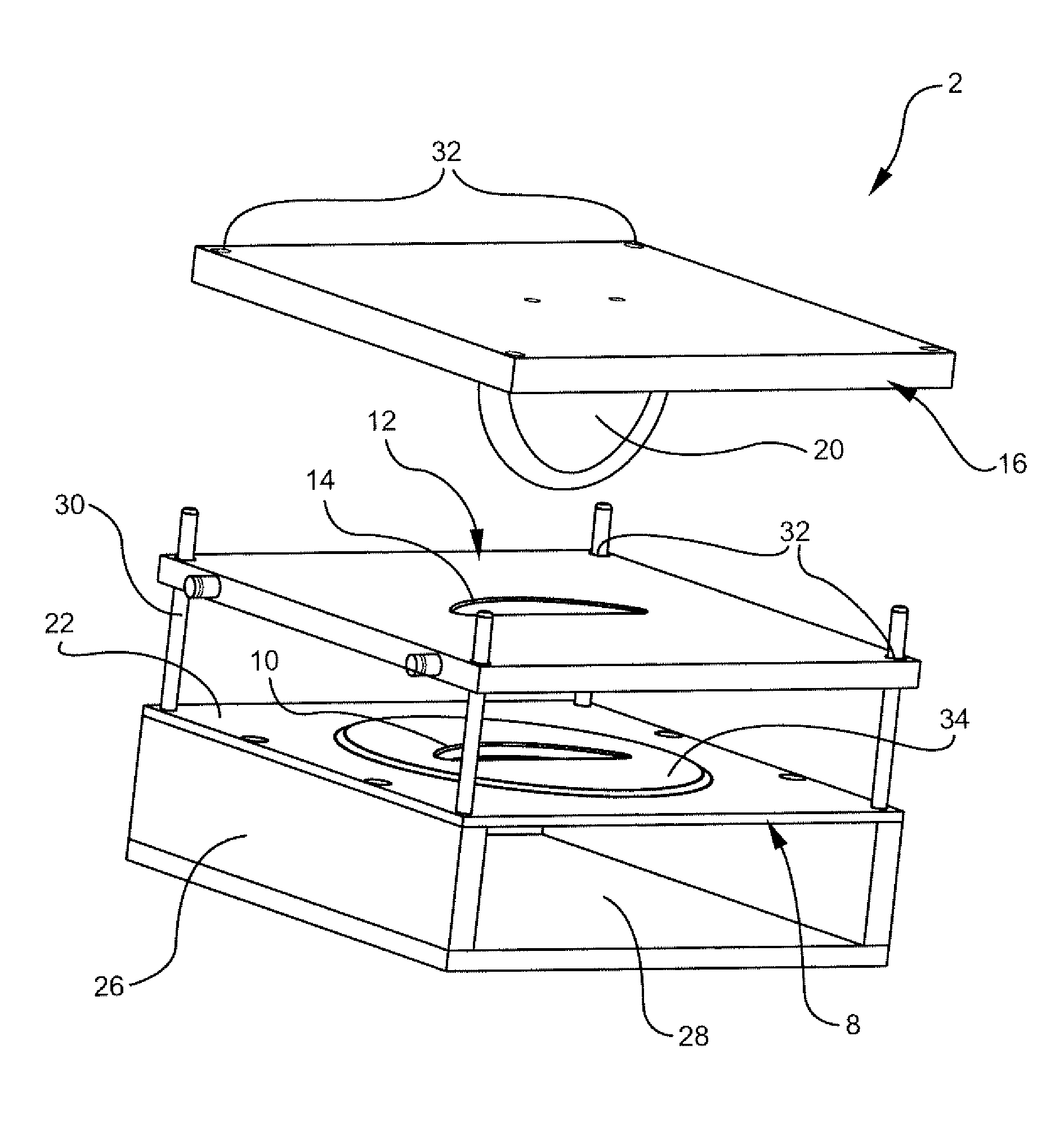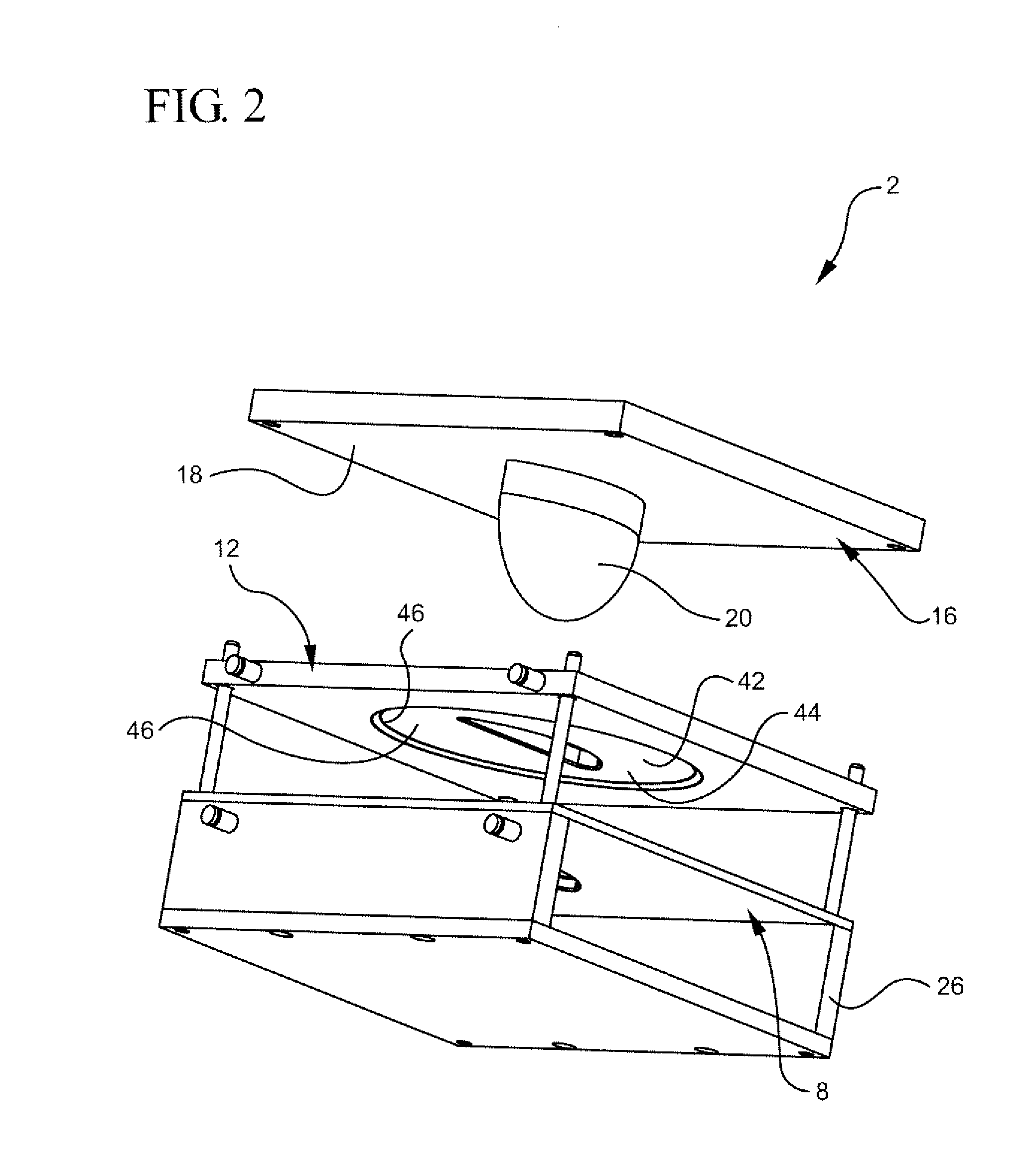Preformed support device and method and apparatus for manufacturing the same
a technology of supporting device and flat mesh, which is applied in the direction of prosthesis, drawing profiling tools, turning machine accessories, etc., can solve the problems of mesh pulling, time and energy required for the preparation of flat mesh into a supporting device, and the mesh cutting in the operating room creates fine dust, etc., to achieve the effect of reducing the number of meshes, and increasing the cross sectional area
- Summary
- Abstract
- Description
- Claims
- Application Information
AI Technical Summary
Benefits of technology
Problems solved by technology
Method used
Image
Examples
Embodiment Construction
[0047]According to one embodiment, a thermoforming apparatus 2 for forming a substantially flat polymeric fabric into a contoured or complex shape for the purpose of creating a preformed, seamless, anatomically contoured device for supporting an anatomical structure or replacement therefor is illustrated by FIGS. 1-4 of the drawings. More specifically, the present invention is used to form a polypropylene mesh 4 into a shape for supporting an anatomical structure or its replacement, such as a breast implant. FIGS. 1 and 2 show one form of the apparatus 2 constructed in accordance with the present invention in semi-exploded, isometric views. FIG. 3 shows a side view of the apparatus 2 in an open configuration. FIG. 4 shows a front view of the apparatus 2 in a closed configuration.
[0048]Initially referring to FIGS. 1-4 of the drawings, it will be seen that apparatus 2 for making such a support device 6 includes a support plate 8 made from a thermally conductive material. The support p...
PUM
| Property | Measurement | Unit |
|---|---|---|
| temperature | aaaaa | aaaaa |
| temperature | aaaaa | aaaaa |
| time | aaaaa | aaaaa |
Abstract
Description
Claims
Application Information
 Login to View More
Login to View More - R&D
- Intellectual Property
- Life Sciences
- Materials
- Tech Scout
- Unparalleled Data Quality
- Higher Quality Content
- 60% Fewer Hallucinations
Browse by: Latest US Patents, China's latest patents, Technical Efficacy Thesaurus, Application Domain, Technology Topic, Popular Technical Reports.
© 2025 PatSnap. All rights reserved.Legal|Privacy policy|Modern Slavery Act Transparency Statement|Sitemap|About US| Contact US: help@patsnap.com



